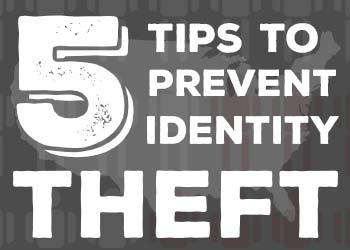Minimizing Your Risk Of Identity Theft
 Taking a few simple steps to protect your personal information may save you from being a victim of identity theft, says Texas A&M University’s Deanna Holder, a financial aid advisor and a member of the university’s financial advising team “Money Wise Aggies.” Identity theft happens when someone uses your personal information to commit crimes such as opening fraudulent accounts, applying for loans in your name, or stealing from existing accounts.
Taking a few simple steps to protect your personal information may save you from being a victim of identity theft, says Texas A&M University’s Deanna Holder, a financial aid advisor and a member of the university’s financial advising team “Money Wise Aggies.” Identity theft happens when someone uses your personal information to commit crimes such as opening fraudulent accounts, applying for loans in your name, or stealing from existing accounts.
1. Don’t list your birthdate or hometown on Facebook
Clever identity thieves can, and have, figured out peoples’ social security numbers using information commonly found on Facebook: birthdate and hometown. “Social security numbers are not completely random,” says Holder. “The first three signify where you were born; the middle two are based on when and where your parents applied for your social security number; and the third set of numbers is given out in a sequential pattern.” It’s possible, she says, for a computer program to figure out social security numbers using only your hometown and date of birth. “You don’t need 500 people you barely know to wish you a happy birthday,” she says.
2. Check your credit report
Periodically check for fraud on your credit report, but know where to look. We’ve all seen the commercials advertising various websites where you can “check your credit report for free.” But there’s really only one you need to know – it’s authorized by law and operated by the federal government. The site is annualcreditreport.com. Once a year – really, for free – you can check your credit report from all three credit reporting agencies (Equifax, Experian and Trans Union). You can check all three in one site visit, or, as Holder suggests, you can check a different report every four months. And if you don’t already, check your paper or online bank statements for fraudulent charges or withdrawals.
3. Only carry the daily necessities
Are you carrying your social security card in your wallet? How about credit cards you hardly ever use? “Wallets and purses are easily lost or stolen, so you should only carry the things you use on a daily basis,” says Holder. “Most of us need a debit card and a driver’s license. Students also need to carry student IDs. Most anything else should be left at home.”
4. Use a cross-cut shredder
Holder suggests shredding credit card bills, loan statements, unused credit applications and any other documents that may contain personal information so thieves can’t fish anything out of your trash. She suggests using a cross-cut shredder, which shreds paper into tiny pieces, as opposed to a standard shredder. “It’s difficult, but not impossible, to put vertically shredded paper back together,” she says.
5. When in doubt, don’t give it out
Identity thieves often scam people into giving out personal information either in person, on the phone, or via email. Online “phishing” schemes often come in the form of an official-looking email that asks you to provide your address, phone number, social security number or account number in order to “update your account.” “No bank or any reputable business or government agency will ask you to reply to an email with sensitive information,” Holder explains. Similarly, thieves may pose as business or government representatives on the phone in an attempt to solicit personal information. And, she says, even when you’re asked by for personal information for a legitimate reason, especially your social security number, “Ask ‘why do you need it? How will it be used? How will you protect it from being stolen? What will happen if I don’t give it to you?’ A big part of protection is to minimize your risk.”
Media contact: Lesley Henton, Texas A&M Division of Marketing & Communications.





